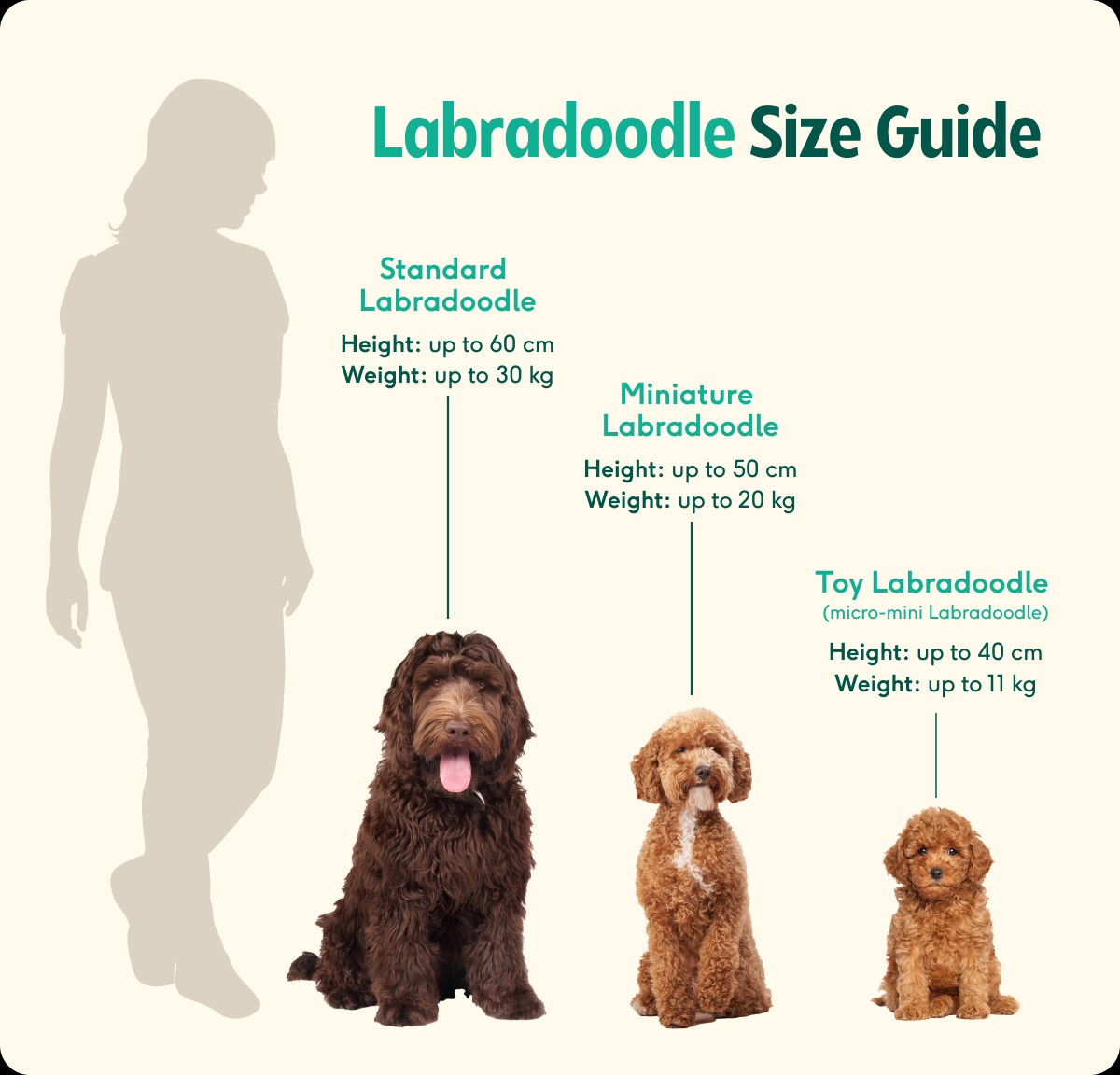
The Labradoodle, a crossbreed between Labrador Retrievers and Poodles, exhibits significant weight variations based on their size classification. These designer dogs come in three distinct categories - Standard (42+ lbs), Medium (26-45 lbs), and Miniature (18-28 lbs). While adult weight ranges are well-documented, individual growth patterns can vary considerably due to genetic factors, including the size of the Poodle parent. Understanding these weight variations is crucial for proper care and development, as Labradoodles typically reach their full size between 12-18 months of age, with the most rapid growth occurring in the first six months.
Average Weight of a Labradoodle
Weight Variations by Generation
According to breeding experts, a Labradoodle's weight can vary significantly based on their generation and genetic makeup. While early generations may show more inconsistent weights due to the mix of Poodle and Labrador genes, later generations tend to have more predictable weight ranges as the breed becomes more established.
Weight Development Timeline
Research shows that Labradoodles experience their most rapid weight gain in the first 6 months, achieving approximately 50% of their adult weight during this period. The growth rate then gradually slows, with most Labradoodles reaching 97% of their final adult weight between 12-18 months of age. Adult weights typically range from 15-100 pounds depending on size variety, with Standard Labradoodles weighing 50-90 pounds, Medium Labradoodles 30-45 pounds, and Mini Labradoodles 15-25 pounds.
Average Weight Ranges for Different Labradoodle Sizes
Size-Specific Weight Classifications
According to experts, Labradoodles are classified into three distinct size categories with specific weight ranges: Mini Labradoodles typically weigh between 15-25 pounds, Medium Labradoodles range from 30-45 pounds, and Standard Labradoodles generally weigh between 50-65 pounds, though some can reach up to 85 pounds.
Growth Rate Patterns by Size Category
Research indicates that while all Labradoodle sizes follow similar growth trajectories, the rate and duration vary by size category. Mini Labradoodles tend to reach their full size faster, usually by 10-12 months, while Standard Labradoodles may continue growing until 18 months. This pattern differs from the general weight development timeline covered previously, as it specifically examines how growth rates vary between size categories rather than overall weight development.
Average Weight of a Labradoodle
Male vs Female Weight Differences
Studies show that there are notable weight differences between male and female Labradoodles across all size categories. Male Standard Labradoodles tend to be 5-10 pounds heavier than females, typically weighing 55-95 pounds compared to females at 50-85 pounds. For Medium Labradoodles, males average 35-48 pounds while females range from 30-43 pounds. In Mini Labradoodles, males generally weigh 20-28 pounds versus females at 15-25 pounds.
Health Impact on Weight
Research indicates that certain health conditions can significantly affect a Labradoodle's weight. Hip dysplasia, a common orthopedic condition in Labradoodles, can lead to reduced mobility and subsequent weight gain if not properly managed. While the previous sections covered normal weight ranges, this section specifically examines how health factors can influence a Labradoodle's weight maintenance.
Conclusion
The research demonstrates that Labradoodle weights vary significantly based on several key factors, with three distinct size categories emerging: Mini (15-25 pounds), Medium (30-45 pounds), and Standard (50-90 pounds). The findings indicate that male Labradoodles typically weigh 5-10 pounds more than females across all size categories. Growth patterns show that Labradoodles experience their most rapid weight gain in the first 6 months, reaching approximately 50% of their adult weight during this period, with full maturity typically achieved between 12-18 months depending on size category.
These weight variations are influenced by factors including generation, genetics, sex, and overall health status, with conditions like hip dysplasia potentially impacting weight maintenance. Understanding these typical weight ranges and growth patterns is crucial for proper health monitoring and care of Labradoodles across their different size classifications. This knowledge can help owners and veterinarians better track growth progress and maintain healthy weight ranges for individual dogs based on their specific size category and sex.